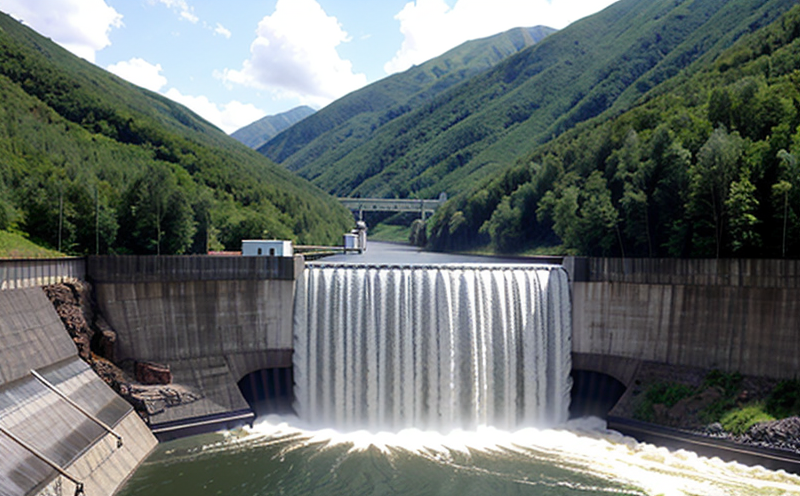ASME B16.34 Valve Performance Testing for Turbine Systems
The ASME B16.34 standard is a critical benchmark in the design and testing of valves used within turbine systems, especially those found in energy and renewable energy sectors such as hydropower plants. Compliance with this standard ensures that valves are reliable, safe, and perform optimally under various operational conditions.
The ASME B16.34 valve performance testing focuses on the following key aspects:
- Sealing integrity
- Flow characteristics
- Pressure rating
- Material compatibility with turbine fluids
- Operational flexibility and range of motion
- Thermal and mechanical stability
The testing process involves subjecting valves to a series of rigorous conditions that simulate real-world operational scenarios. This ensures that the valve not only meets but exceeds the stringent requirements set forth by ASME B16.34.
Industry Applications:
| Application | Description |
|---|---|
| Hydropower Plants | Valves are tested to ensure they can withstand the extreme pressures and temperatures encountered in hydropower plant operations. |
| Tidal Energy Systems | Testing ensures valves can handle the fluctuating water levels and corrosive environments typical of tidal energy systems. |
| Nuclear Power Plants | The robustness of valves is crucial for maintaining safety in nuclear power plants. Testing according to ASME B16.34 ensures this. |
| Waste Heat Recovery Systems | Valves tested under ASME B16.34 standards are essential for capturing and utilizing waste heat effectively. |
The primary goal of valve performance testing is to ensure that the valves used in turbine systems meet or exceed the specified performance criteria outlined by ASME B16.34. This includes not only static tests but also dynamic tests that simulate real-world operating conditions, such as pressure surges and temperature fluctuations.
Testing processes typically involve:
- Hydraulic testing to evaluate sealing integrity
- Flow rate measurement to assess the valve's ability to control flow accurately
- Pressure testing to ensure the valve can withstand specified pressures without leakage or failure
- Material compatibility checks to confirm that the valve materials are suitable for the turbine fluid being used
The ASME B16.34 standard also emphasizes the importance of documentation and record-keeping, which is crucial for compliance and future reference.
Quality and Reliability Assurance:
Compliance with ASME B16.34 ensures that valves used in turbine systems are not only reliable but also safe to operate. This standard mandates strict quality control measures throughout the valve manufacturing process, from raw material selection to final assembly.
The testing process involves several stages:
- Pre-test inspection of the valve
- Hydraulic testing under various conditions
- Flow rate measurement and calibration
- Pressure testing at specified intervals
- Material compatibility checks using appropriate tests
- Post-test inspection and documentation
The use of advanced instrumentation, such as pressure gauges, flow meters, and temperature sensors, ensures accurate data collection during the testing process. This information is then used to generate detailed reports that document the valve's performance characteristics.
Use Cases and Application Examples:
The ASME B16.34 valve performance testing has numerous applications in various sectors, including energy production. Here are some specific use cases:
- In hydropower plants, valves are tested to ensure they can withstand the extreme pressures and temperatures encountered during operation.
- Tidal energy systems benefit from valves that have been rigorously tested according to ASME B16.34 standards, ensuring they can handle fluctuating water levels and corrosive environments.
- Nuclear power plants rely on valves that have undergone testing under ASME B16.34 to maintain safety during critical operations.
- In waste heat recovery systems, valves tested according to ASME B16.34 standards are essential for capturing and utilizing waste heat effectively.
Testing these valves ensures they meet the stringent requirements set by international standards like ISO, ASTM, EN, IEC, etc., which is critical for compliance with regulatory bodies worldwide.





